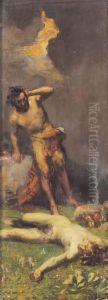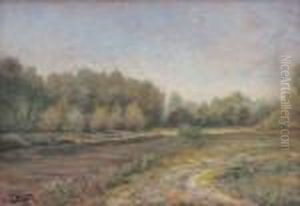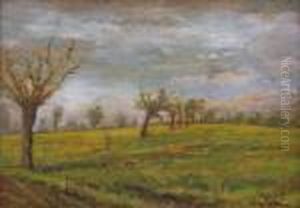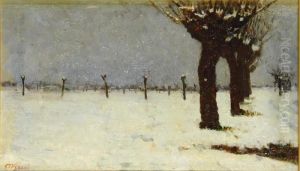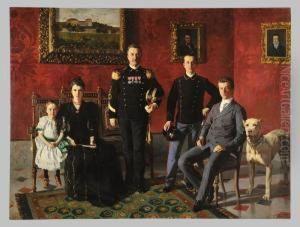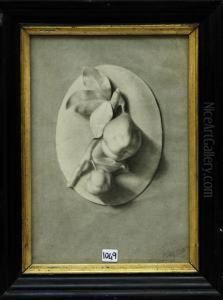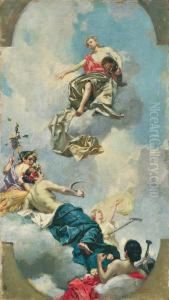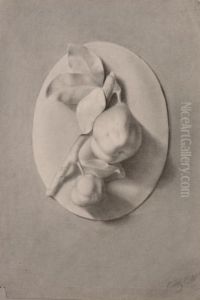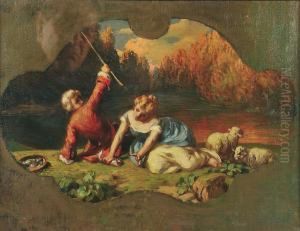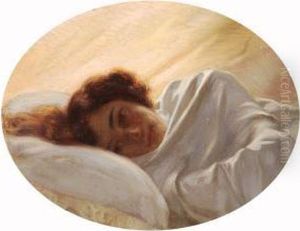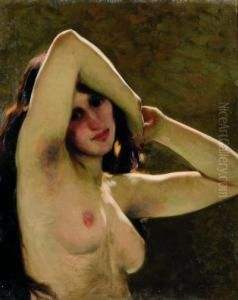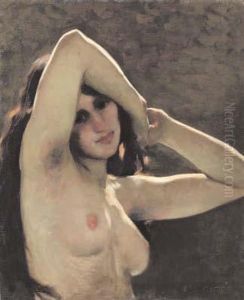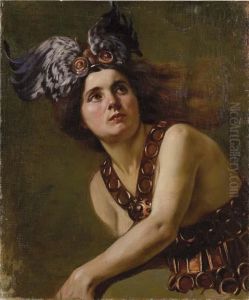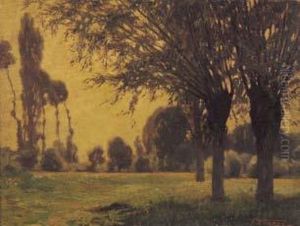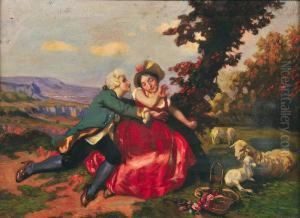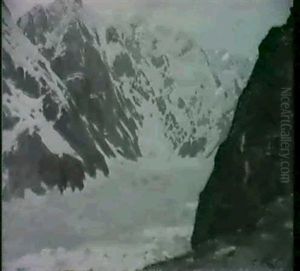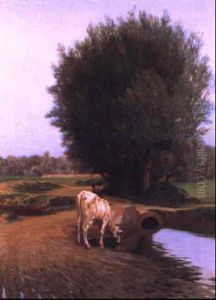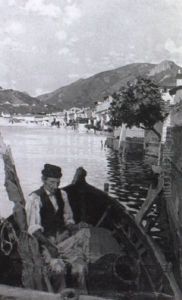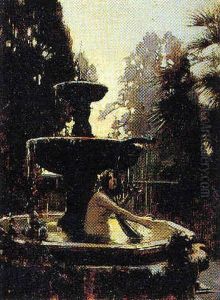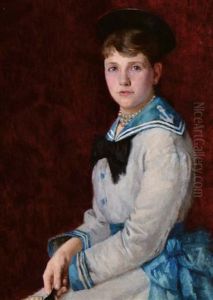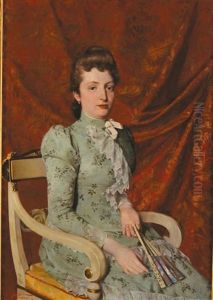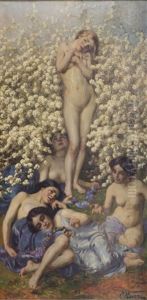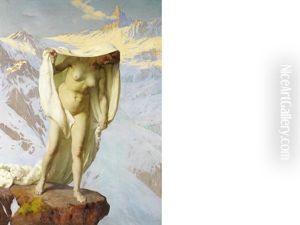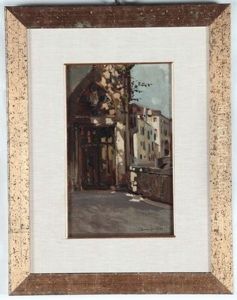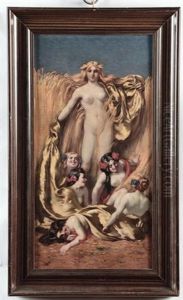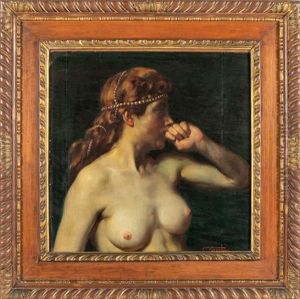Cesare Viazzi Paintings
Cesare Viazzi was an Italian painter and printmaker, born in Genoa in 1857. His artistic journey is deeply interwoven with the cultural and social fabric of Italy during the late 19th and early 20th centuries. Viazzi showed an early interest in art, a passion that would define his entire life. He received his initial training at the Accademia Ligustica di Belle Arti in Genoa, where he honed his skills and developed a distinctive style that merged traditional techniques with emerging artistic trends of the time.
Viazzi's work is characterized by its versatility, encompassing a wide range of subjects including landscapes, portraits, and genre scenes. He had a particular affinity for capturing the essence of daily life in Italy, rendering scenes with a sensitivity and attention to detail that brought the mundane to life. His landscapes of the Italian Riviera and the countryside around Genoa are particularly noted for their vibrant colors and dynamic compositions, which capture the changing moods of nature and the subtleties of light and shadow.
Throughout his career, Viazzi was an active participant in the Italian art scene, contributing to various exhibitions and artistic circles. He was associated with the Gruppo dei Grigi, a group of artists who sought to explore the nuances of color and light in their work, pushing the boundaries of traditional painting techniques. This collective was part of a broader movement in Italian art that aimed to reinterpret and revitalize the country's artistic heritage in the face of modernity.
Despite his contributions to the Italian art world and his prolific output, Cesare Viazzi remained relatively obscure outside of Italy until after his death in 1929. In recent years, however, there has been a renewed interest in his work, with exhibitions and research shedding light on his artistic legacy. Viazzi's paintings are now recognized not only for their technical skill but also for their capacity to convey the spirit of an era, making him an important figure in the study of Italian art history of the late 19th and early 20th centuries.
